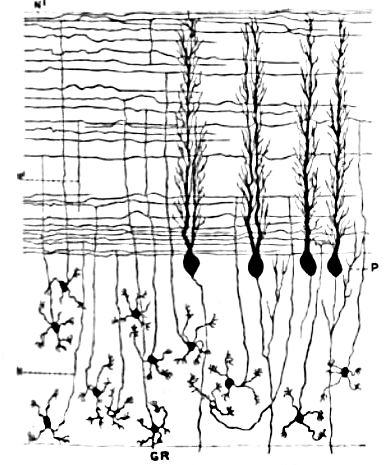Neurolucida & Stereo Investigator Help Uncover Cerebellar Granule Cells’ Role in Muscle Memory

Learning a new dance routine or how to ride a bike is possible because of Cerebellar Granule Cells (GCs) according to Galliano and colleagues in The Netherlands. To find out more about the role of these abundant brain cells, and why we have so many of them, the scientists silenced most of the GCs in a group of mutant mice. They found the rodents could balance and run as well as they ever did, but when it came to learning new activities involving motor function, the mice had a harder time.
“Our findings indicate that a minority of functionally intact GCs is sufficient for the maintenance of basic motor performance, whereas acquisition and stabilization of sophisticated memories require higher numbers of normal GCs controlling PC firing,” the authors say in their paper published last month in Cell Reports.
Comprising more than half of all neurons in the central nervous systems of vertebrates, GCs are a particularly populous type of neuron, but why? To get some answers, the research team bred a type of mouse for which the output of most, but not all, GCs was inhibited, then they tested the experimental mice alongside control mice in a variety of motor performance tasks.
In open field, balance beam, and rotating rod tests, both groups demonstrated equal skill. But when the animals were tested on their ability to learn to walk on a rotating rod that spun faster and faster, the control mice performed significantly better than experimental mice. The mutant group also showed impaired learning after training, leading the scientists to speculate that the cerebellar system, which coordinates muscular activity, needs “a wider dynamic range of simple spike modulations of Purkinje cells to entrain its target neurons downstream” – a direct consequence of abundant populations of normally functioning GCs.
“These findings provide important experimental clues as to why vertebrates need an extreme abundance of functional GCs in daily life and to what extent this abundance is redundant,” they say.
During the course of the study, the researchers examined cell morphology, synaptic activity, and plasticity with methods that included whole-cell patch clamp recording, immunohistochemistry, and electron microscopy. They used Neurolucida to assess the morphology of neurons, and measured the dendritic length of GCs stained with Golgi-Cox staining with Stereo Investigator. They also used Sholl analysis to measure the dendritic arborization of Purkinje cells.
Find out more about the study in Cell Reports.
Galliano, E., Gao, Z., Schonewille, M., Todorov, B., Simons, E., Pop, A. S., D’Angelo, E., van den Maagdenberg, A., Hoebeek, F., & De Zeeuw, C. I. (2013). Silencing the Majority of Cerebellar Granule Cells Uncovers Their Essential Role in Motor Learning and Consolidation. Cell Reports. doi: 10.1016/j.celrep.2013.03.023
Image: Public domain figure of neurons in the cerebellar cortex from Cunningham’s Textbook of Anatomy (1913) via Wikimedia Commons.
To stay updated on new research by MBF Bioscience customers, “like” us on Facebook and follow us on Twitter.


